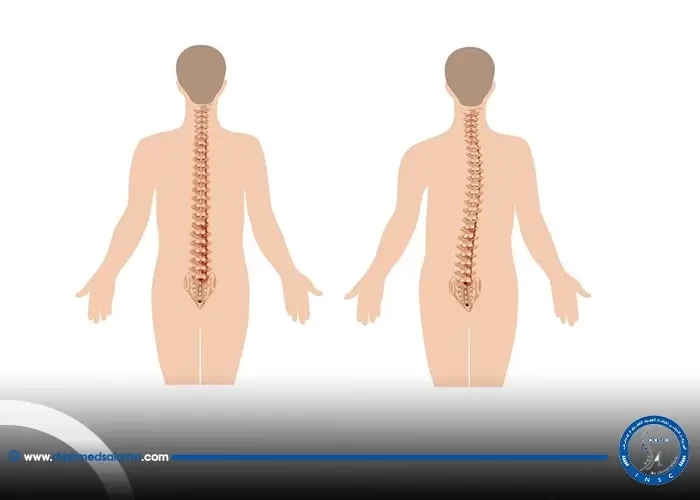Nasr City, 52 El Tayaran Street, in front of the Health Insurance Hospital

Success rate of brain tumor surgeries

Brain tumor surgery is a complex and challenging procedure that requires extensive knowledge, skill, and experience. It is a critical treatment option for individuals diagnosed with brain tumors, which can significantly impact their physical, emotional, and mental health. However, the success rate of brain tumor surgery can vary depending on several factors such as the type of tumor, its location, size, patient's age, and overall health status. In this blog post, we will explore the success rate of brain tumor surgery and take a closer look at the factors that influence it. We will also discuss some important considerations to keep in mind before undergoing brain tumor surgery.
Introduction to Brain Tumor Surgery Success Rates
Brain tumor surgery can be a life-saving procedure, but the success rates vary depending on many factors. As discussed in previous blog sections, survival rates are influenced by the type and grade of the tumor, a patient's age, and other prognostic factors. Understanding the potential success rate of brain tumor surgery is critical for making informed decisions about treatment options. Despite the challenges, there is hope for patients with brain tumors, especially when choosing the right surgeon and care team. This blog will examine the many factors impacting the success rates of brain tumor surgery and provide valuable information for those who may be facing this difficult diagnosis.
The Importance of Survival Rates in Brain Tumor Surgery
Survival rates play a crucial role in understanding the success of brain tumor surgery. While survival rates vary based on several factors, such as the type and grade of the tumor, age, and overall health, they can give patients and their families an idea of what to expect after surgery. It's important to keep in mind that survival rates are just estimates and should not be viewed as definitive. Nevertheless, they can provide hope and support to those going through the difficult journey of brain tumor surgery. Ultimately, the goal of surgery is to remove as much of the tumor as possible, improve quality of life, and extend survival. Understanding survival rates can help patients make informed decisions and work closely with their medical teams to develop treatment plans.
Factors Affecting Brain Tumor Surgery Success Rates
Several factors can affect the success rate of brain tumor surgery, some of which have been mentioned in the previous sections. Age, tumor grade, performance status, and extent of surgery are some of the most significant contributing factors. Additionally, the location of the tumor, the patient's overall health, and the type of procedure used can impact the outcome of the surgery. For instance, minimally invasive techniques are generally associated with shorter hospital stays, less risk of complications, and quicker recovery times. However, these procedures may not be suitable for all patients depending on their tumor characteristics. Ultimately, the success rate of brain tumor surgery depends on a combination of factors and should be discussed with the patient's healthcare team before deciding on the best course of action.
Understanding the Different Types of Brain Tumors
In order to understand the success rates of brain tumor surgery, it's important to first understand the different types of brain tumors. As discussed earlier, there are benign, malignant, and metastatic tumors that can affect the brain. Meningiomas are the most common primary brain tumors, while glioblastoma multiforme (GBM) is one of the most aggressive and deadly types. There are also lower grade gliomas, such as pilocytic astrocytoma and oligodendroglioma, which tend to have higher survival rates. By knowing the specific type of tumor a patient has, doctors can better determine the course of treatment and what kind of success rates to expect. While each tumor is unique, patients can take comfort in knowing that medical advancements are leading to longer survival times and increasing hope for those affected by brain tumors.
Survival Rates for Glioblastoma and Oligodendroglioma
In discussing the success rate of brain tumor surgeries, it is important to note the differences in survival rates for various types of tumors. Glioblastoma, the most aggressive type of brain tumor, has a very low average survival time of 12-18 months, and only 25% of patients survive beyond one year. Oligodendroglioma, on the other hand, has a much higher survival rate with about 66-78% of patients surviving for five years or more. These survival rates are affected by factors such as the extent of surgical resection, as well as the patient's age and overall health. It is important for patients and their doctors to understand these differences in order to provide a realistic outlook on prognosis and to make informed decisions about treatment options.
Survival Rates for Meningioma and Anaplastic Tumors
When it comes to brain tumor surgery success rates, survival rates vary greatly depending on the type and grade of the tumor. Meningiomas, which are mostly benign tumors originating from the coverings of the brain and spinal cord, have a relatively high survival rate. However, the outlook is not as positive for anaplastic meningiomas, which are a more aggressive form of the tumor. Patients with anaplastic meningiomas have a lower overall survival rate and are more likely to experience relapses. It's important for patients and their families to understand these differences and discuss treatment options with their medical team. The success of brain tumor surgery also depends on various individual factors such as age, overall health, and the location and size of the tumor. Regardless, there is hope and support available for brain tumor patients and their loved ones.
The Benefits and Risks of Brain Tumor Surgery
When undergoing brain tumor surgery, it's important to understand both the benefits and risks involved. Surgery can remove a tumor completely or reduce its size, potentially alleviating symptoms and improving quality of life. However, there are also risks associated with brain surgery, such as bleeding, infection, stroke, and cognitive changes. Before deciding to undergo surgery, patients should have an honest conversation with their doctors about the potential benefits and risks. Other factors, such as the location and type of tumor, also play a role in determining whether surgery is the best course of treatment. With the help of a skilled and experienced neurosurgeon, patients can weigh the benefits and risks and make an informed decision about their care.
How Doctors Diagnose Brain Tumors
To determine the appropriate treatment plan and prognosis, doctors need to accurately diagnose brain tumors. There are several diagnostic methods that doctors use to diagnose brain tumors, including imaging tests such as CT scans, MRIs, and PET scans. If imaging tests show abnormal tissue, doctors may recommend a biopsy to confirm the diagnosis. In some cases, doctors may use a stereotactic biopsy, which is a type of biopsy that uses 3D imaging to locate the tumor and take a tissue sample. If a biopsy is not possible, doctors may diagnose the brain tumor based on the patient's symptoms and medical history. Regardless of the diagnostic method used, early detection and diagnosis are key factors in improving the success rate of brain tumor surgery.
Tips for Choosing the Right Brain Surgeon
When it comes to choosing the right brain surgeon, there are multiple factors to consider. First and foremost, patients should look for surgeons who specialize in performing brain surgeries, preferably those who have fellowship training and extensive experience in the field. It's also crucial to choose a surgeon who communicates well and is willing to answer all the questions that patients may have. Additionally, patients should choose a surgeon who works in a hospital with state-of-the-art equipment and technology to ensure the best results. Lastly, it's essential to find a surgeon who is compassionate, understanding, and committed to providing comprehensive and personalized care throughout the patient's journey. With these tips in mind, patients can select a skilled brain surgeon who will help them achieve the best possible outcome.
Conclusion: Hope and Support for Brain Tumor Patients
In conclusion, hope and support are crucial for individuals who are battling brain tumors. While survival rates can be daunting, it is important to remember that outcomes can vary based on various factors, including the type of tumor and the patient's overall health. Choosing a skilled and experienced brain surgeon can also play a key role in achieving successful outcomes. Furthermore, patients should not hesitate to seek out emotional support and resources to help them cope with the challenges they may face. With the right care and support, individuals living with brain tumors can maintain hope for a positive outcome and continue living fulfilling lives.
Can a benign tumor in the head turn malignant?
No, benign tumors usually do not turn into malignant tumors, but they can pose a risk to the patient, so treatment must be initiated immediately upon discovery
Is it possible to fully recover after a benign brain tumor removal operation?
Yes, it is possible to fully recover after a benign brain tumor removal operation, but it may take 4 to 8 weeks after the operation






